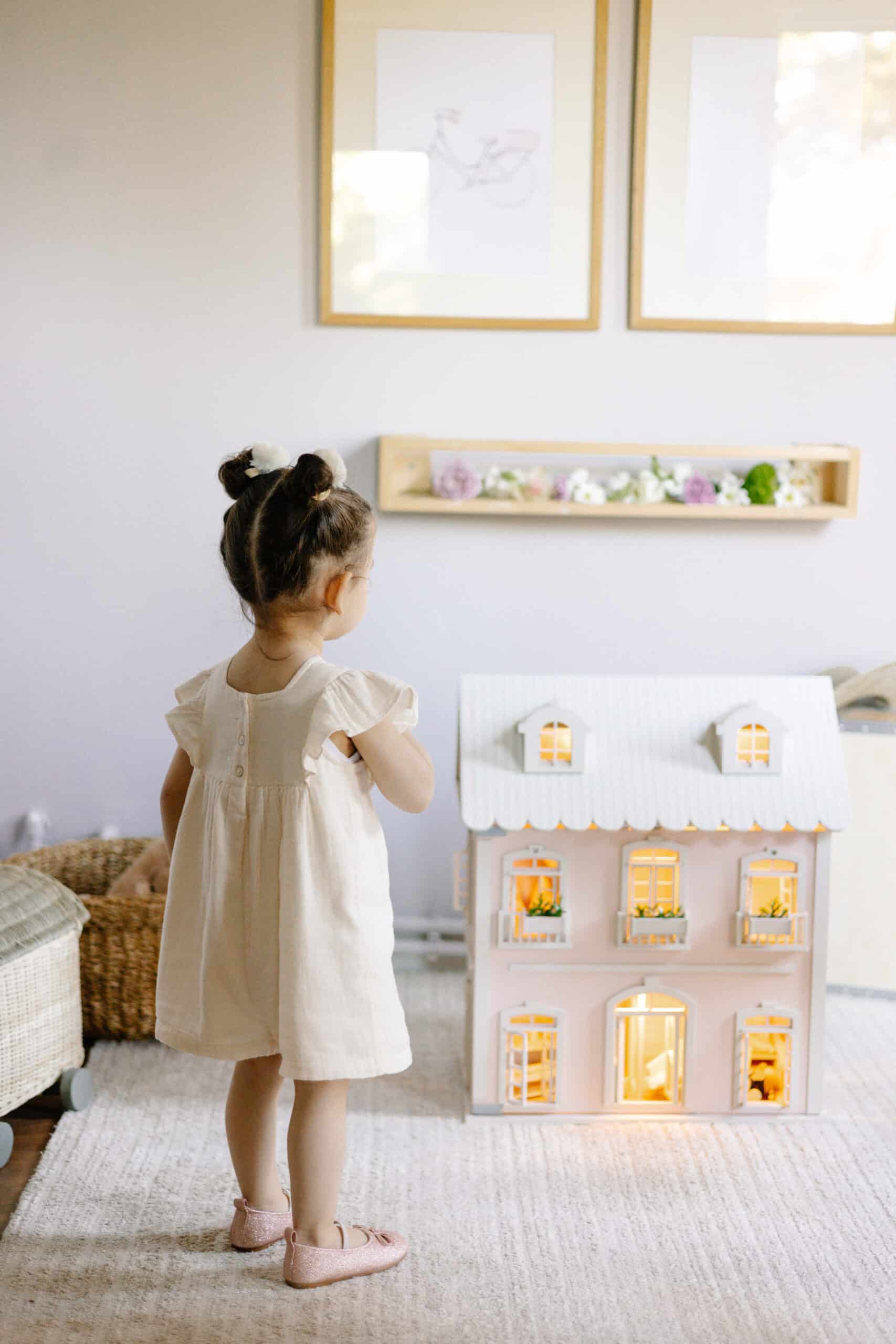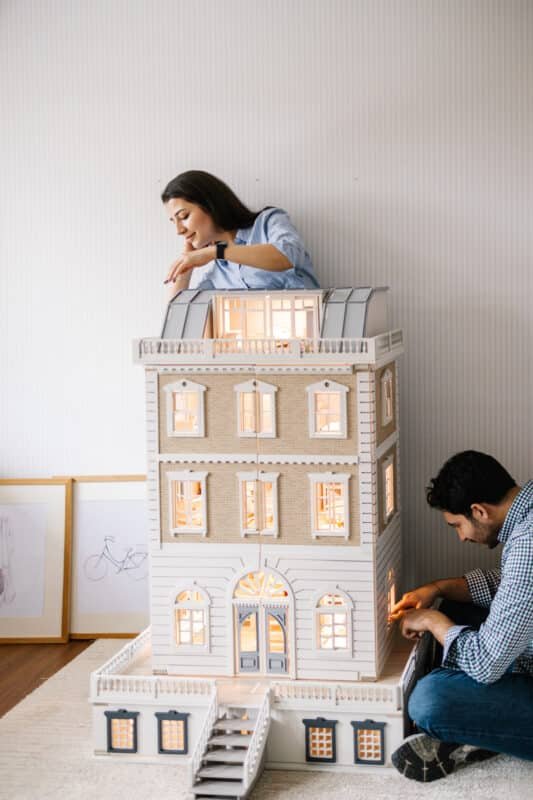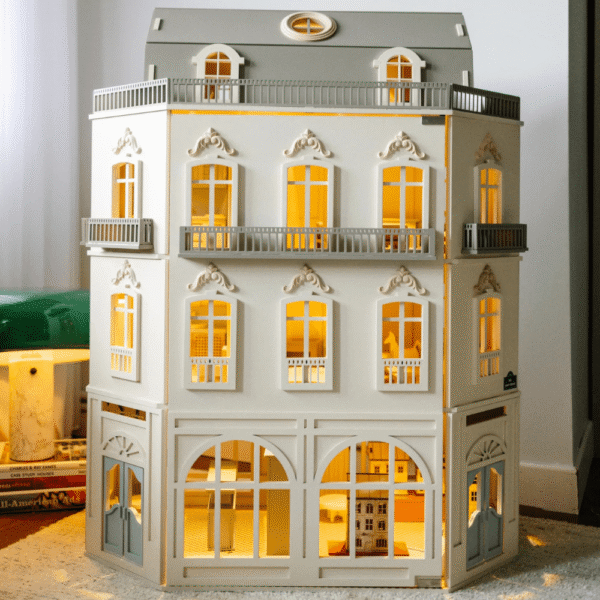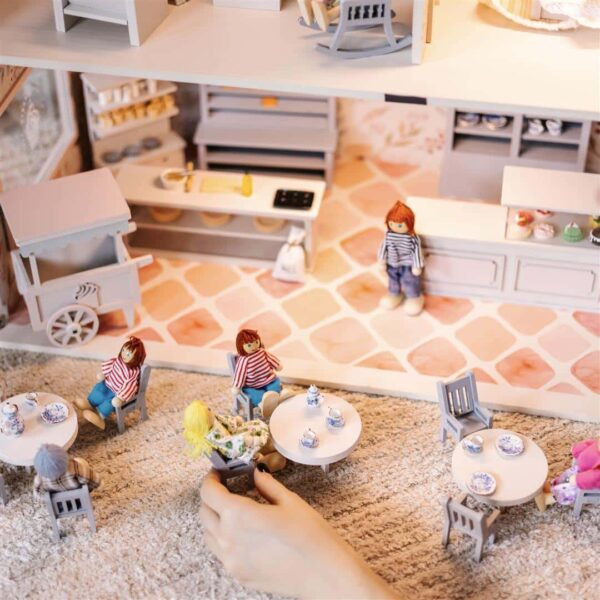Wooden vs. Plastic Dollhouses: The Best Choice for Eco-Friendly Play

When it comes to choosing the right dollhouse for your child, the materials used in its construction play a critical role. With eco-consciousness on the rise, many parents are looking at the pros and cons of wooden vs. plastic dollhouses to make a choice that aligns with their values for sustainability and durability. In this guide, we’ll break down the benefits of each material, highlighting why wooden dollhouses often come out on top as the preferred choice for eco-friendly play.
Why Material Matters: An Overview
Dollhouses provide children with endless opportunities for creativity, social interaction, and imaginative play. However, the material used in making a dollhouse not only affects its durability but also has an impact on the environment. Here’s a quick look at why the material matters:
- Durability: Quality materials ensure the toy lasts longer, meaning fewer replacements and less waste.
- Safety: Natural materials, especially untreated wood, are often safer for young children due to the lack of harmful chemicals.
- Environmental Impact: Choosing sustainable materials reduces carbon footprints and contributes to a cleaner planet.

The Benefits of Wooden Dollhouses
Wooden dollhouses are a timeless choice. Often made from high-quality wood like beech or birch, they are durable, biodegradable, and safe for children. Here are the top reasons to consider a wooden dollhouse:
1. Eco-Friendly and Sustainable
- Wooden dollhouses are typically crafted from sustainably sourced wood, such as FSC-certified timber, which ensures that the material is harvested in an environmentally responsible way. For parents looking for an eco-friendly option, wood is a natural choice that supports sustainability.
2. Durability and Longevity
- Wood is known for its strength and longevity. A well-made wooden dollhouse can withstand years of play, potentially becoming a family heirloom. Unlike plastic, which can crack and deteriorate over time, wooden dollhouses are built to last and remain intact even with rough play.
3. Aesthetic Appeal
- Wooden dollhouses often come with a minimalist design, showcasing the natural beauty of the wood grain. They are easy to blend with home decor and add a touch of elegance to any room. Many wooden models are hand-painted, using non-toxic finishes to ensure they are both beautiful and safe.
4. Safe and Non-Toxic
- Since most wooden dollhouses are finished with non-toxic, water-based paints, they are much safer for children, especially toddlers who may be prone to mouthing toys. Plastic toys, on the other hand, can sometimes contain harmful chemicals such as BPA, phthalates, or PVC, which are best avoided.
The Benefits of Plastic Dollhouses
While wooden dollhouses are often seen as the eco-friendly choice, plastic dollhouses have their own set of advantages. In certain circumstances, plastic can be a better fit depending on budget, style, and functionality.
1. Lightweight and Portable
- Plastic dollhouses tend to be much lighter than wooden ones, making them easier for children to move around. If portability is a concern, plastic options are often more manageable for young kids who want to carry their dollhouse from room to room.
2. Bright and Colorful Designs
- Plastic dollhouses are often available in a range of vibrant colors and detailed designs that attract children’s attention. They may come with intricate accessories, moving parts, and interactive elements that add to the play experience.
3. Budget-Friendly
- Plastic dollhouses are generally less expensive than their wooden counterparts. This makes them an accessible choice for families looking for a dollhouse on a budget or for those who want to try out dollhouse play without a large investment.
4. Waterproof and Easy to Clean
- Plastic is easy to wipe down and sanitize, which is a bonus for parents concerned about hygiene. Unlike wood, which can absorb moisture and may require special care, plastic can be quickly cleaned with soap and water.
Environmental Impact: Wooden vs. Plastic Dollhouses
When it comes to environmental impact, wooden dollhouses are typically the more sustainable choice. Here’s how each material compares:
| Material | Environmental Impact | Lifespan |
|---|---|---|
| Wood | Sustainable, biodegradable, minimal environmental footprint | Long-lasting, heirloom quality |
| Plastic | Non-biodegradable, often derived from petroleum-based products | Shorter lifespan, prone to wear |
Wooden dollhouses break down naturally over time, making them a more eco-friendly option. In contrast, plastic takes hundreds of years to decompose and can end up contributing to landfill waste. Additionally, many wooden dollhouses are crafted by artisans and smaller manufacturers who prioritize sustainable practices, whereas plastic dollhouses are often mass-produced in factories with a larger carbon footprint.
Comparing the Aesthetics: Wooden vs. Plastic Dollhouses
The aesthetic differences between wooden and plastic dollhouses also play a role in decision-making. Here’s how they compare:
- Wooden Dollhouses: Known for their classic, minimalist look, wooden dollhouses often incorporate neutral tones and natural finishes. They are appealing for parents looking for toys that blend seamlessly into their home decor and are less flashy.
- Plastic Dollhouses: These are more likely to feature bright colors and elaborate themes, such as castles, farms, or even mini-mansions. While engaging, they may be less versatile in terms of aesthetics, often standing out in playrooms rather than blending with decor.
Top Wooden Dollhouses for Eco-Friendly Play
Here are some of the top wooden dollhouses that combine sustainability, quality, and charm:
- House of Rome Dollhouse – Italian Charm
- Made from FSC-certified wood and designed with Italian-inspired architecture, this dollhouse is perfect for eco-conscious families.
- View Product
- House of London Dollhouse – British Design
- Crafted from high-quality beech wood, this British-style dollhouse is a durable choice with non-toxic finishes.
- View Product
- House of Nice Dollhouse – French Design
- This French-inspired model offers an elegant aesthetic with natural wood finishes, ideal for parents seeking a more minimalist look.
- View Product
Choosing the Right Dollhouse for Your Family
When it comes to choosing between wooden and plastic dollhouses, the decision ultimately depends on your child’s needs, your budget, and your commitment to sustainability. Here are some key considerations to guide you:
- Age and Play Style: Younger children may benefit from the lightweight and colorful nature of plastic, whereas older children and those interested in aesthetics might prefer wooden dollhouses.
- Budget: Plastic dollhouses can be more affordable, making them a good entry-level option. Wooden dollhouses, although pricier, offer durability and eco-friendliness that provide value over time.
- Long-Term Goals: If you’re looking for a dollhouse to pass down through generations, wooden models are likely a better investment due to their longevity.
FAQs About Wooden and Plastic Dollhouses
Are wooden dollhouses more expensive than plastic ones?
Yes, wooden dollhouses tend to be more expensive due to the quality of materials and craftsmanship. However, they are more durable and eco-friendly, making them a worthwhile investment.
Is it harder to clean a wooden dollhouse?
Wood requires a gentler cleaning approach, as harsh chemicals can damage the finish. A damp cloth is usually enough. Plastic dollhouses are easier to clean with soap and water, which can be beneficial for quick sanitation.
Are wooden dollhouses safe for toddlers?
Yes, especially if they are made from untreated, non-toxic wood. Avoid small parts if the dollhouse is intended for very young children.
Which is more durable, wood or plastic?
Wooden dollhouses are generally more durable and less prone to wear and tear. Plastic, while resilient, can crack over time, especially if exposed to rough play.
Can wooden dollhouses be recycled?
Yes, wooden dollhouses are biodegradable and can be repurposed or recycled in many cases. Plastic dollhouses are harder to recycle due to the combination of materials and may contribute to landfill waste.
Final Thoughts: Wooden vs. Plastic Dollhouses
Choosing the right dollhouse depends on what matters most to you as a parent. If sustainability, durability, and timeless design are priorities, wooden dollhouses are likely the best choice. However, if budget, portability, and vibrant colors are more important, a plastic dollhouse may be the way to go.
Regardless of the material, dollhouses offer a fantastic way to engage children in imaginative play, encouraging creativity, storytelling, and learning. Consider the benefits and trade-offs, and choose a dollhouse that fits your child’s needs and your family’s values. With thoughtful consideration, you’re sure to find a dollhouse that brings joy and inspiration to your child for years to come.




